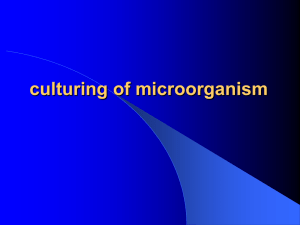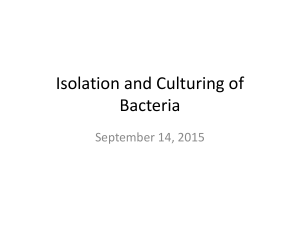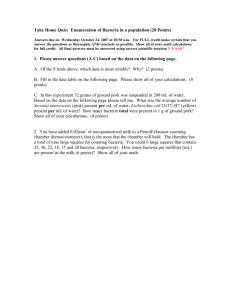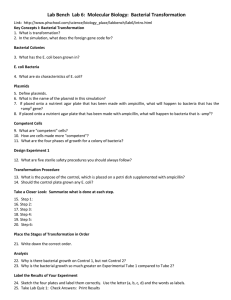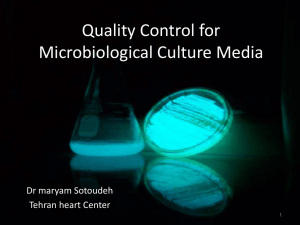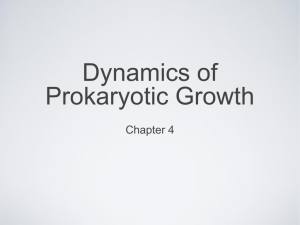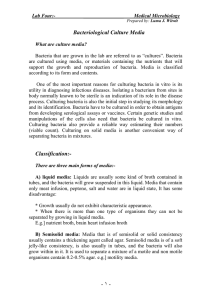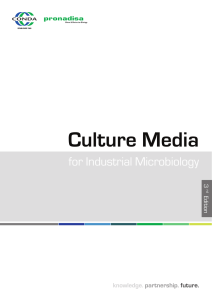Abstract
advertisement
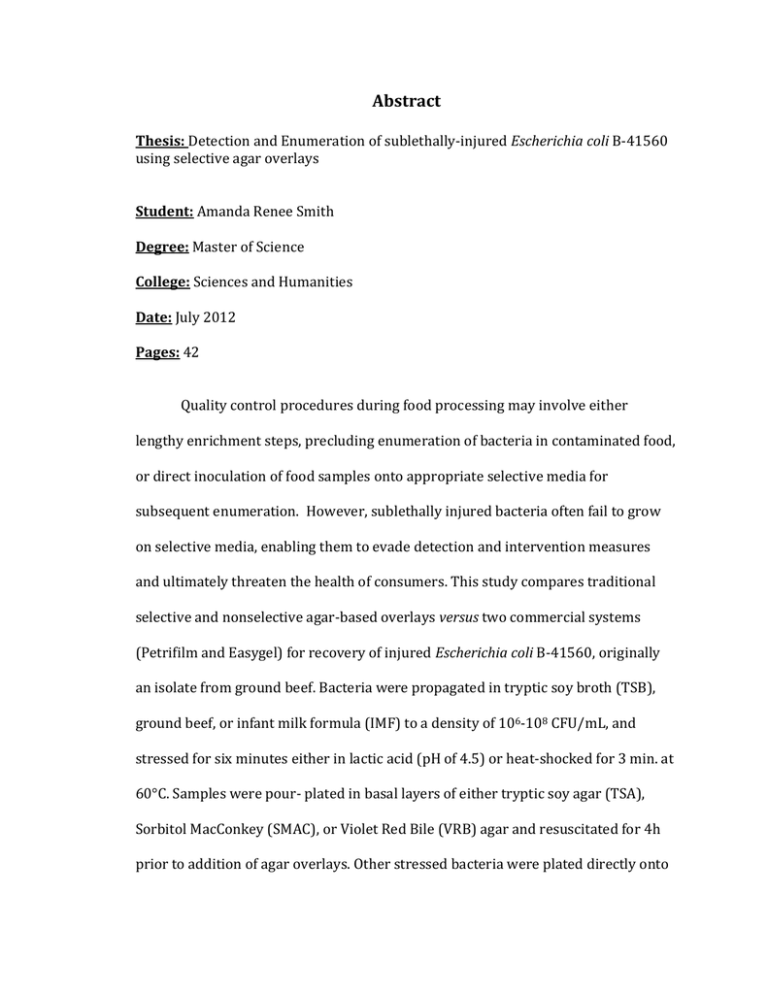
Abstract Thesis: Detection and Enumeration of sublethally-injured Escherichia coli B-41560 using selective agar overlays Student: Amanda Renee Smith Degree: Master of Science College: Sciences and Humanities Date: July 2012 Pages: 42 Quality control procedures during food processing may involve either lengthy enrichment steps, precluding enumeration of bacteria in contaminated food, or direct inoculation of food samples onto appropriate selective media for subsequent enumeration. However, sublethally injured bacteria often fail to grow on selective media, enabling them to evade detection and intervention measures and ultimately threaten the health of consumers. This study compares traditional selective and nonselective agar-based overlays versus two commercial systems (Petrifilm and Easygel) for recovery of injured Escherichia coli B-41560, originally an isolate from ground beef. Bacteria were propagated in tryptic soy broth (TSB), ground beef, or infant milk formula (IMF) to a density of 106-108 CFU/mL, and stressed for six minutes either in lactic acid (pH of 4.5) or heat-shocked for 3 min. at 60°C. Samples were pour- plated in basal layers of either tryptic soy agar (TSA), Sorbitol MacConkey (SMAC), or Violet Red Bile (VRB) agar and resuscitated for 4h prior to addition of agar overlays. Other stressed bacteria were plated directly onto the commercial media Petrifilm and Easygel. Our results indicate that the use of selective and nonselective agar overlays for sensitive recovery and accurate enumeration of E. coli B-41560 is dependent on the stress treatment and food system. These data underscore the need to implement food safety measures that address sublethally- injured bacteria such as E. coli O157:H7, without the use of enrichment steps, in order to avoid underestimation of true densities for target pathogens.
